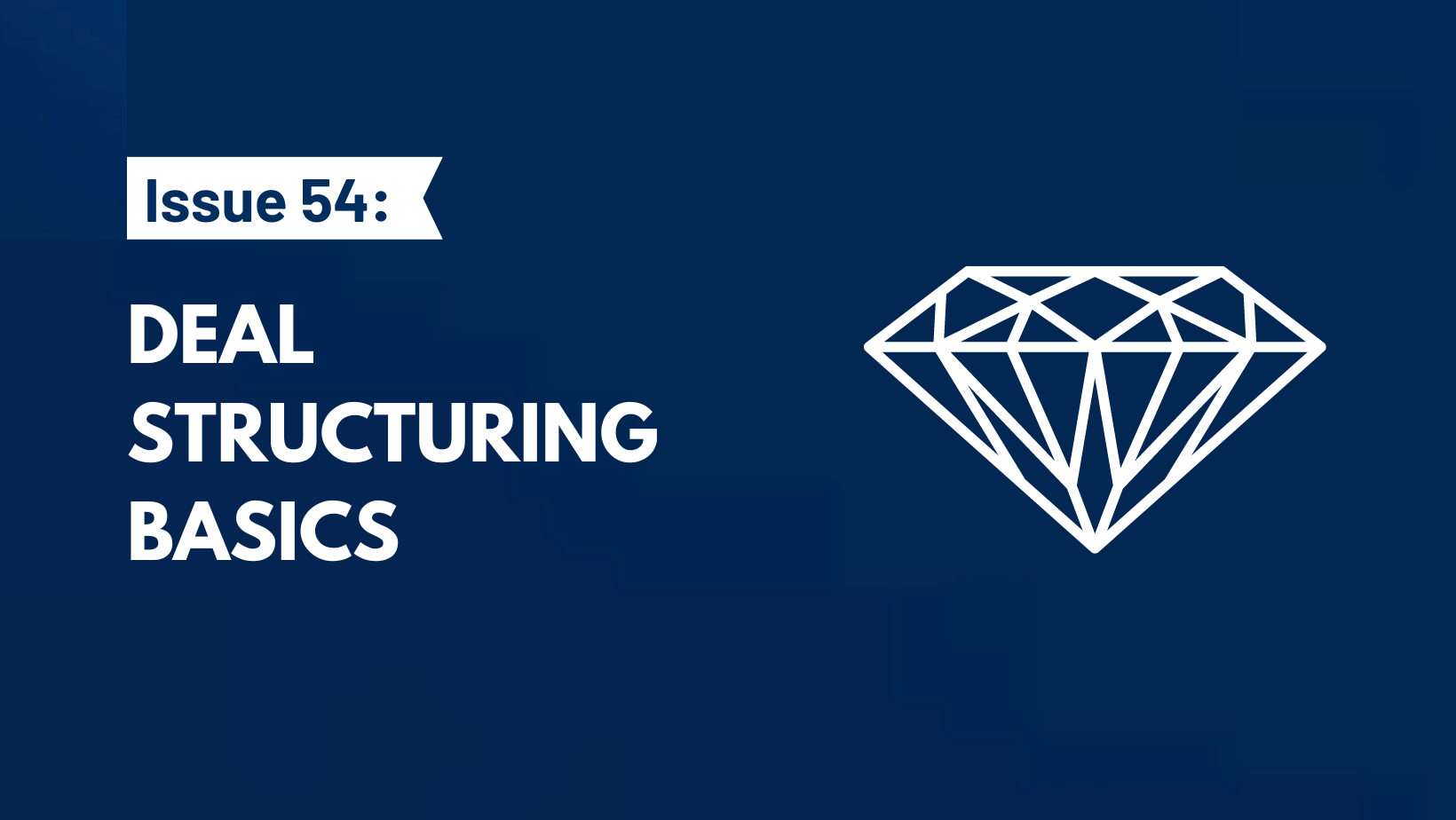First, I want to thank all of you who came to SMB Social in Toronto last night. I’m blown away by the attendance (~120 people showed up). Big shoutout to Nunzio for putting this together!
I’m grateful to have had a chance to connect with many of you, and for the folks that I didn’t get a chance to speak to, always feel free to reach out to me.
I was asked to do a brief talk on some of the basics of deal structuring. So I am sharing my notes from the talk below (bear in mind, these a jot notes for my talk, not fully fleshed-out sentences):
Quick intro on deal structuring:
- Structuring is great, it can align incentives for buyers/sellers
- As a buyer, it allows you to manage risk better, reduce upfront cash outlay required
- Sellers can generally get a higher valuation (and therefore more money for their biz) compared to just cash upfront
- That said, it generally does make an offer less attractive – if a deal is competitive, less structure
- Complexity can also be a deal killer
- Let’s dive into the 3 most common forms of deal structuring
Earnout:
What is it
- Consideration paid contingent on hitting specified objectives
- Objectives could be numerically based like future revenue, EBITDA, gross profits or they could be qualitative based like a client contracting renewing
Pros
- Shifts some risk of future business performance from buyer to seller
- Less cash upfront for the buyer
- Seller can end up making more cash with an earnout
Cons
- Earnouts are unattractive to sellers because they don’t have control of new business (so less control of hitting targets)
- Can lead to disputes between seller/buyer on whether earnouts were achieved
Tips
- Generally used to bridge a valuation gap, if you think biz is worth $10m on trailing numbers, and seller thinks its worth $15m on forward numbers, a $5m earnout might make sense
- The more objective the targets, the better. Objectivity starts to shrink as you go from revenue down to EBITDA/profits
- If the earnout is achieved, rather than paying it immediately all at once, convert earnout amount into a seller note and then pay it down over time (so the business doesn’t get sucked of all its cash)
Seller note
What is it
- The seller becomes a lender and effectively lends you money to buy their business
- Usually its interest bearing, principal amortized over time, or in some cases, paid in a bullet at a future date
Pros
- Seller knows exactly what they will earn post-sale (compared to earnout), no ambiguity – interest-bearing seller note might be a great addition to their fixed income portfolio (think retirees)
- Allows buyer to obtain more leverage, juicing equity returns
- Generally, it’s cheaper cost of capital compared to many other forms of debt from external lenders
Cons
- As with any form of leverage/debt, more if it increases risk and reduces the flexibility of the business
- Might cross hairs with lenders, might cause some complexity if you had to borrow more money at a future date
Tips
- Ensure seller note is subordinate to any other lender (otherwise you will have a hard time getting loans)
- Include flexibility clauses, long grace periods for missed payments, steps for remedy if default, discuss with seller upfront
- Don’t offer personal guarantees for this note (usually sellers won’t ask for it)
Seller equity rollover
What is it
- Seller takes some equity in your new entity instead of cash
- Not particularly common in SMB acquisitions (searchers, etc.) but very common in LMM private equity
Pros
- Aligns seller and buyer (both own the same go-forward biz, so vested in its success)
- Seller gets a second bite of the apple, another large payday (if your plan is to sell the biz in a reasonable timeframe)
Cons
- Your seller is now your business partner (may be a good or bad thing), accounting for the highly leveraged nature of SMB buyouts, even small amount of equity roll might mean meaningful equity stake – say you leverage 4:1 and rollover 10% of purchase price, seller will own 50% of the biz
- Particularly unattractive to sellers, especially if they’re older, low-risk tolerance, illiquid equity in an SMB is not valuable to them in retirement and may not want to wait for the next payday
Tips
- Ensure rolled-over equity is common equity without voting rights, and outside equity raised is prefeed equity with voting rights. Preferred equity gets (at least) 1x liquidation preference, so they get their money back first in the event of a sale
- Communicate to seller what you plan to do with biz so they know what to expect as an equity holder (sell in 5 years? Hold for dividends?)
- Use in cases where seller can add significant value post-close (complex transitions, expertise in expansion and or other value-add initiatives where seller can be crucial for execution)
Conclusion
- So there you have it, 3 of the most common forms of deal structuring
- Always remember to consult with your deal lawyer/CPA to ensure everything is done correctly
- Hope this helps, structuring is just another tool to your deal toolkit




